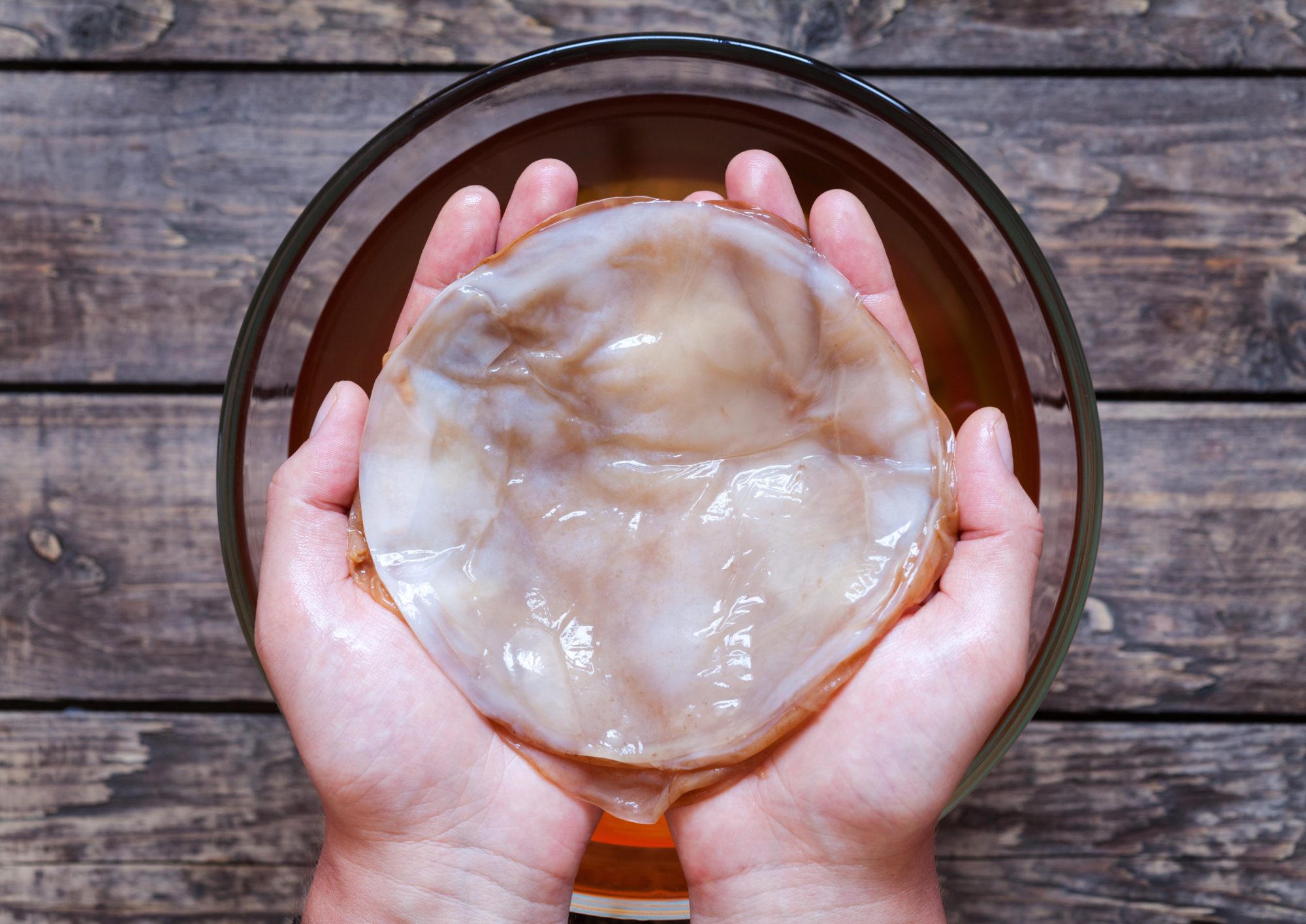SCOBY is an abbreviation for “symbiotic culture of bacteria and yeast.” It’s the key component used in fermenting kombucha. You can buy a SCOBY commercially or cultivate one yourself to brew kombucha at home.
Kombucha is a fermented drink prized for its distinctive taste and potential health perks.
Although you can find it in supermarkets and specialty shops, you can easily prepare your own using tea, sugar and a SCOBY.
A SCOBY appears as a dense, rubbery, cloudy layer that facilitates the fermentation process.
This article describes what a kombucha SCOBY is and outlines how to grow your own.

What Is a Kombucha SCOBY?
A SCOBY, meaning “symbiotic culture of bacteria and yeast,” is the living culture used to ferment and produce kombucha.
Fermentation is a biochemical process during which carbohydrates like sugar or starch are transformed into alcohol or acids.
Appearance varies, but a typical SCOBY is thick, round, rubbery and opaque with a faint vinegar-like aroma.
Watch for mold or a pungent, cheesy smell, which could signal that the SCOBY has gone bad and should be thrown away.
The SCOBY’s disc-like form is largely made of an insoluble fiber called cellulose.
It also contains many yeast and bacterial strains that drive the fermentation process.
Other fermented foods and drinks — such as kefir, sourdough and ginger beer — depend on comparable symbiotic cultures.
SummaryA SCOBY is a symbiotic assembly of bacteria and yeast that assists the fermentation of kombucha.
How It Works
Kombucha is made by placing a SCOBY into sweetened black or green tea, then allowing it to ferment for 1–4 weeks.
The bacteria and yeast within the SCOBY metabolize the tea’s sugars and convert them into alcohol, carbon dioxide and acids (3).
The end product is a slightly effervescent beverage with a tangy, sweet and vinegar-like profile. The exact flavor hinges on fermentation duration, the tea variety used and any added ingredients such as fruit, juice or herbs.
Fermentation also boosts the amount of probiotics — beneficial gut bacteria linked to several health advantages.
Indeed, research has associated probiotic intake with lower cholesterol, stronger immune function and support for weight management, among other benefits.
SummaryA SCOBY converts sugars in sweetened tea into alcohol, carbon dioxide and acids. The finished kombucha is rich in various probiotics.
Selecting the Right One
If you want to brew kombucha at home, sourcing a SCOBY is the initial step.
You can buy starter kits or cultures online and at some health food stores.
Look for an organic SCOBY from a trusted seller to minimize pesticide exposure and ensure quality.
You might also borrow a SCOBY from a friend who brews at home or join online groups to find someone local willing to share.
Because the SCOBY grows with every batch, it can be split and shared by trimming a 1-inch (2.5-cm) piece from the top and passing it on.
Although contamination risk is low when handled correctly, discard any SCOBY that shows mold, a foul smell or other signs of spoilage.
SummaryYou can purchase a SCOBY online, pick one up at a health food outlet or borrow from a friend. If you detect mold, an offensive odor or decay, dispose of the SCOBY.
How to Make Your Own
It’s also feasible to cultivate your own SCOBY.
Start with a 16 oz bottle of raw, unflavored kombucha and 1 cup (250 ml) of black or green tea sweetened with 1–2 tablespoons (14–28 grams) of sugar.
Mix the kombucha with the cooled sweet tea in a jar and cover it with a coffee filter or clean dishtowel secured over the opening.
Keep the jar in a warm area — roughly 68–80°F (20–30°C) — and allow it to ferment up to 30 days. As it forms, the SCOBY will thicken and lose some translucence.
When the SCOBY reaches about 1/4-inch (2/3-cm) thickness, it’s ready to use for brewing a new kombucha batch with sweetened green or black tea.
SummaryGrowing a SCOBY is straightforward — you need raw kombucha, sweet tea and patience.
The Bottom Line
A SCOBY is a symbiotic culture of bacteria and yeast used to produce kombucha.
You can buy one from nearby or online sellers or grow it yourself using raw, unflavored kombucha and sweetened black or green tea.
When handled properly, contamination risk is low, but always discard a SCOBY if you notice mold, an off-putting odor or other signs of spoilage.
Making or acquiring a SCOBY lets you brew your own kombucha, ensuring a steady supply of this probiotic-packed, refreshing beverage.


















Leave a Reply
You must be logged in to post a comment.